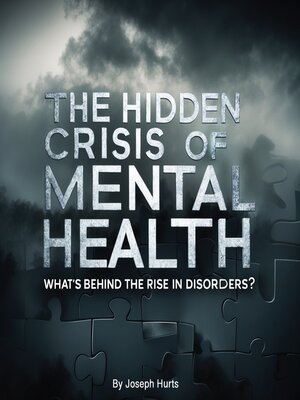The Hidden Crisis of Mental Health
audiobook (Unabridged) ∣ What's Behind the Rise in Disorders?
By Joseph Hurts

Sign up to save your library
With an OverDrive account, you can save your favorite libraries for at-a-glance information about availability. Find out more about OverDrive accounts.
Find this title in Libby, the library reading app by OverDrive.



Search for a digital library with this title
Title found at these libraries:
| Library Name | Distance |
|---|---|
| Loading... |
This audiobook is narrated by a digital voice.
Mental health disorders have reached epidemic proportions across developed nations, affecting every demographic group while imposing enormous costs on individuals, families, healthcare systems, and society as a whole. This crisis has emerged gradually over several decades, often hidden behind euphemisms, stigma, and institutional reluctance to acknowledge the true scope of psychological suffering that characterizes modern life. The dramatic increases in depression, anxiety, suicide, and other mental health problems cannot be explained solely by improved diagnosis or reduced stigma, suggesting that fundamental changes in how we live are creating unprecedented levels of psychological distress.
Depression rates have increased dramatically across all age groups, with particularly steep rises among young people who should theoretically be experiencing the healthiest and most optimistic periods of their lives. Major depressive disorder now affects over 300 million people worldwide, making it the leading cause of disability globally. The World Health Organization projects that depression will become the number one cause of disease burden by 2030, surpassing even cardiovascular disease and cancer in its impact on human suffering and economic productivity.
Anxiety disorders have shown even more dramatic increases, with generalized anxiety disorder, panic disorder, and social anxiety affecting unprecedented numbers of people while previously rare conditions like agoraphobia and specific phobias have become increasingly common. The constant worry, fear, and hypervigilance that characterize anxiety disorders are now so prevalent that they are often normalized as reasonable responses to modern life rather than recognized as symptoms of psychological dysfunction.







